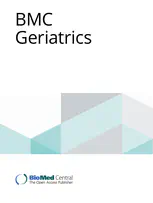Risk-of-falling related outcomes improved in community-dwelling older adults after a 6-week sideways walking intervention: a feasibility and pilot study

Abstract
BACKGROUND: Aging increases fall risk and alters gait mechanics and control. Our previous work has identified sideways walking as a potential training regimen to decrease fall risk by improving frontal plane control in older adults’ gait. The purposes of this pilot study were to test the feasibility of sideways walking as an exercise intervention and to explore its preliminary effects on risk-of-falling related outcomes.
METHODS: We conducted a 6-week single-arm intervention pilot study. Participants were community-dwelling older adults ≥ 65 years old with walking ability. Key exclusion criteria were neuromusculoskeletal and cardiovascular disorders that affect gait. Because initial recruitment rate through University of Nebraska at Omaha and Omaha community was slower than expected (3 participants∙week-1), we expanded the recruitment pool through the Mind & Brain Health Labs registry of the University of Nebraska Medical Center. Individualized sideways walking intervention carried out under close supervision in a 200 m indoor walking track (3 days∙week-1). Recruitment and retention capability, safety, and fidelity of intervention delivery were recorded. We also collected (open-label) walking speed, gait variability, self-reported and performance-based functional measures to assess participants’ risk-of-falling at baseline and post-intervention: immediate, and 6 weeks after the completion of the intervention.
RESULTS: Over a 7-month period, 42 individuals expressed interest, 21 assessed for eligibility (21/42), and 15 consented to participate (15/21). Most of the potential participants were reluctant to commit to a 6-week intervention. Desired recruitment rate was achieved after revising the recruitment strategy. One participant dropped out (1/15). Remaining participants demonstrated excellent adherence to the protocol. Participants improved on most outcomes and the effects remained at follow-up. No serious adverse events were recorded during the intervention.
CONCLUSIONS: Our 6-week sideways walking training was feasible to deliver and demonstrated strong potential as an exercise intervention to improve risk-of-falling outcomes in community-dwelling older adults. In a future trial, alternative clinical tools should be considered to minimize the presence of ceiling/floor effects. A future large trial is needed to confirm sideways walking as a fall prevention intervention.
TRIAL REGISTRATION: ClinicalTrials.gov identifier: NCT04505527. Retrospectively registered 10 August 2020.